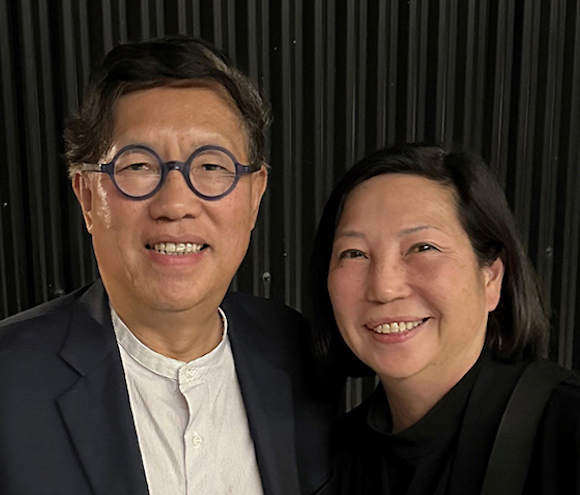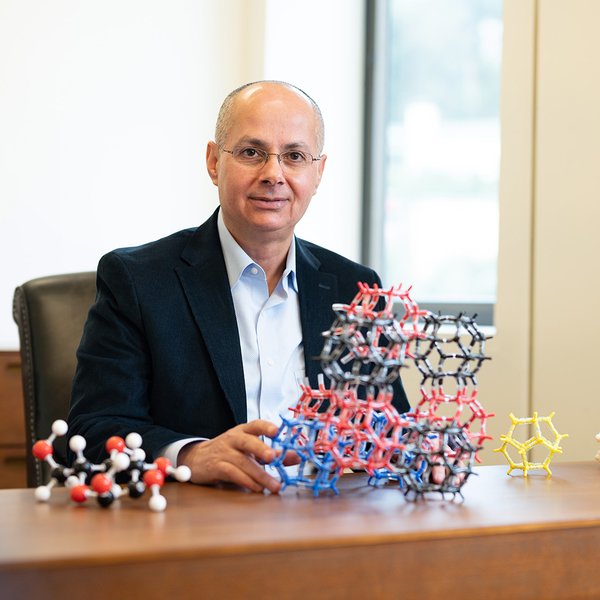The gift, from Joseph O. Wong ’72, M.Arch. ’74 (FAIA) and Dr. Vivian Lim, endows the JW&VL Professor of Practice and strengthens the college’s work in the areas of housing and urban design. Both Wong and Lim have strong connections to the University of California. Wong received his undergraduate and professional graduate degrees in architecture from Berkeley. Lim, a diagnostic radiology specialist, teaches at UC San Diego Medical Center, where she did her residency and fellowship. Their daughter, Alina, received her M.B.A. in 2023 from Berkeley Haas.

Joseph O. Wong '72, M.Arch. '74 (FAIA) and Dr. Vivian Lim
Wong is founder and president of Joseph Wong Design Associates (JWDA), a global architecture, interior design, and urban planning firm based in San Diego. In its 46-year history, the firm has been widely published in the U.S. and Asia and recognized with numerous international, national, and local awards of excellence. One of JWDA’s main areas of focus is high-density multifamily urban housing.
Wong served on the CED Advisory Council for many years and received the CED Distinguished Alumni Award in 2023. In presenting the award, William W. Wurster Dean Renee Y. Chow cited his work in addressing the homelessness crisis in San Diego. One recent JWDA project provides more than 400 units of supportive housing for individuals and families who are transitioning out of homelessness.
“We are thrilled to receive this generous gift from Joe and Vivian, which endorses CED’s commitment to improve society through environmental design,” says Chow. “The JW&VL Professor of Practice will bring leading national and international professionals to interact with our students and faculty, advancing discourse around the urgent issues of housing and the future of cities.”
We asked Wong to share some memories of CED and the impact he and Lim hope their gift will have on the college and our society.
Can you share a memory or two of your time at CED?
Among the many fond memories of my time at CED, the most memorable are the lifelong lessons learned about the various design disciplines from both professors and peers, leading me to an expanded understanding of architecture. At CED I learned that architecture is not just about buildings, it is about environs, community, and especially people, and how each of these concerns contributes so instrumentally to the design process.
How has CED impacted your life and career?
I arrived at Berkeley more than five decades ago at age 19. It was an exciting and enjoyable time, but more profoundly, it was a game-changer for my life. Discovering the concept of social responsibility, which has always been in Berkeley’s DNA, and its connection to architecture, shaped my perspective in ways that left an indelible imprint on me as an architect. I was also greatly influenced by the focus, knowledge, and engagement of my professors, which inspired my own dedication to mentorship. In my practice and in working with my team, my CED education has served as a foundation, guiding JWDA’s mission to create buildings that encourage social connection, engage the community, and respond to and strengthen our environment.
What inspired this gift?
Today, as we face many daunting challenges including climate change, social inequality, and urbanization, CED remains one of the world’s most respected schools. It has consistently emphasized environmental design as a profoundly ethical practice, coproduced through dynamic engagements with diverse communities, workers, businesses, and policy makers. Vivian and I are pleased and honored to support the continuation of these essential commitments with this gift to my alma mater.
What do you hope this gift will achieve?
We are confident that CED will continue to lead the way through teaching and research to guide future generations of students toward a critical understanding of cities around the world, their architectures and landscapes, issues and challenges, and their many layers of significance.
Can you speak to how you think CED is positioned to fulfill these goals?
CED is poised to address the world’s most pressing design challenges both in sustainability and inclusivity. How do we design for a better future? The answers are copious, ranging from large-scale initiatives that combat global issues, to small domestic fixes that improve the day-to-day lives of vulnerable communities. We trust that CED will continue to lead the way in identifying innovative, viable solutions.



